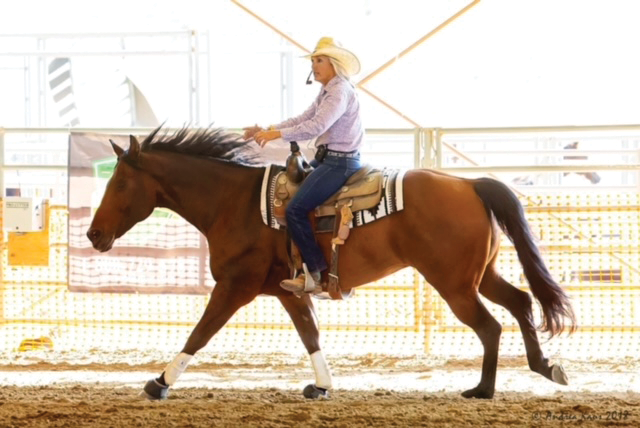By Sheryl Lynde | Horsetrader columnist

I learn from each horse and I learn from each rider. I think we have a tendency to do too much, or micromanage. Understanding why we do what we do helps us to change and let go of unwanted behaviors. Understanding why horses do what they do helps us to better understand and differentiate between a symptom and the cause.
Using force or being overly critical creates resistance in any relationship.
When I observe a horse carry his rider through a pattern flawlessly in any discipline, it’s like watching a symphony, each verse flows into the next. I am inspired for the relationship that these two have formed. I also know and respect the amount of time that both the human and the horse have devoted to reach this level of athletic ability and horsemanship.
There is beauty in flow; there is rhythm. It comes from “feel”. I get lost in the ease of each movement, the utter lack of resistance. So how can we strive for this “flow”?
It takes being consistent with boundaries. Corrections when being given consistently provide clear boundaries that can be easily respected. There is an open communication between the horse and rider. The rider is making the path clear, this is where the horse feels safe.
When you think about it, the same applies to the human. When instructing the human, if the methods used are overly critical or negative, the human becomes resistant to the teacher.
The student begins to comply out of fear of retribution, not from a place of understanding or learning. When I watch a rider being overly critical with their hands, the horse lacks freedom of movement. There is constant resistance, and the ride looks laborious. The rider is straining to have their way and the horse is straining to have his way. I recognize it because I have been guilty of the same. Having felt it, I can see it.
The first step is ground work. Ground work provides the foundation that solidifies and establishes leadership. There is always a hierarchy and always a leader in the herd. Even if the herd consists of two horses, there is always one that is the leader of the other. Ground work identifies the holes and allows the rider to address those issues on the ground. The horse you lead is the horse you ride.
The next step for me is being able to guide with my seat and legs. I will correct with my hands, but I first cue through my seat and legs. The cue first originates through my seat and legs. When I ride I am ever vigilant of my hands. I want to first give a signal with my seat and legs before using my hands. If I want to transition down from an extended trot to a jog, I will exhale, sit instead of post, and slow the rhythm of my legs as I continue to move with the horse. If I want a noticeable change in the speed of my horse, there has to be a noticeable change in my body. If the horse does not respond to the cues given from my seat and legs, I will correct with the rein. I will pick up one rein, ask him to slow to the pace of my body and then release when the horse matches my energy. I will repeat this pattern as often as I need to until I get the desired speed off the cues given from my body. When he responds, then we move on. I will ask for a direction change by first looking where I want to go. If I want turn to my left, I will look to my left. By looking where you want to go initiates changes in your body position that the horse can feel. If I look to my left while keeping my chin in line with the buttons of my shirt, this simple movement shifts my weight slightly to my right sit bone which better enables me to use my right leg. The horse can “feel” the direction I want to take. If he does not respond to my cue, I will pick up the left rein and direct his feet to the left, then release. I will continue this exercise until the horse moves in the direction I am looking and moves off the pressure given by my leg. The better my horse responds to cues given by my seat and legs, the less resistance I feel when I add the reins. This is the beginning of connectivity. There is a lightness that develops, a freedom of movement, fluidity. There are moments of effortlessness. This is the space that inspires.
“On the other side of resistance is flow.”
–Sheryl
Leave a Comment
All fields must be filled in to leave a message.